This article was updated in September 2023 to make sure it is up-to-date. Some of my favorite restaurants in the earlier version have since closed, sadly.
Whenever any of my friends visit Chiang Mai, they always ask me where to eat. To save time always repeating the same places, I’ve put together this guide of my favorite places to eat in and around Chiang Mai that I’ve discovered and appreciated in the year that I’ve lived here.
An amazingly multicultural city, the breadth and quality of cuisines in Chiang Mai is impressive. It’s the most foodie city in Thailand, and besides the iconic Thai classics and Northern Thai specialties, there is excellent food here from all parts of Asia, Europe, and North America. If you find yourself in Chiang Mai, you can find a high-quality version of almost any dish, and you can satisfy almost any craving while you’re here.
So where should you eat in Chiang Mai? There are so many options between the city’s thousands of restaurants, so I’ll break it down by cuisine and list my favorites. I’ll also make special note of my top restaurant choices.
Thai Food in Chiang Mai
Here’s a quick rundown of dishes that you’ll frequently find in Thailand, or at your local Thai restaurant:
- Pad Thai. The word “pad” means “stir fry.” This dish is Thai-style stir-fried noodles. It’s the most well-known Thai dish outside of Thailand, and it’s quite popular here too.
- Pad See Ew. Like pad Thai but with thicker, large noodles in a soy-based sauce.
- Tom Yum. Tom yum is a red-orange soup with your choice of meat; pork is most popular. This one can be very spicy, just a heads up.
- Tom Kha. Tom kha is a light, fragrant coconut-milk based soup with herbs, veggies, and your choice of meat.
- Gra Prao. Gra prao (sometimes called “kra pow”) is minced meat stir-fried with Thai basil. One of my personal favorites.
- Gra Teeam. Gra teeam is essentially the same as gra prao, except with garlic instead of basil. Also very tasty.
- Satay, Moo Ping, and Fried Chicken. You’ll find these sold everywhere, especially by little street food stands. Essentially, they’re grilled or fried meats. Satay are spiced chicken skewers, moo ping are deliciously marinated grilled pork skewers, and fried chicken needs no introduction.
- Panaeng. Panaeng curry, or just “Panaeng,” is one of the most popular curry dishes in Thailand. Thai curries use a coconut milk base, giving this curry (and the next few) a hearty, sweet flavor.
- Green Curry, also known as gaeng kiauw whan (“sweet green curry”). Like Panaeng, but sweeter, with Thai eggplant in it.
- Massaman Curry. Massaman is an Indian-inspired Thai curry. It’s more cinnamony and fragrant. A personal favorite.
- Pad Priauw Whan. Sweet-and-sour stir fry. Meats and veggies served in a delicious, sweet sauce.
- Khao Pad. Exactly what you’d expect from its translation: “fried rice.” For an extra-Thai twist, you can get it served in a hollowed-out pineapple.
- Som Tum, also known as Papaya Salad. A popular crispy salad from northeast Thailand. It’s tasty, tart, and usually spicy, made from julienned papaya, chilis, veggies, sauces, and spices. It can also sometimes be made with mango instead of papaya (mango salad), which I love even more.
These dishes are all popular and easy to find at just about any Thai restaurant, and the simpler ones, such as the stir-fry dishes, are also easy to find at street food stands.
It is difficult to recommend specific Thai restaurants in Chiang Mai for two reasons. First, all the ones I’ve ate at have been great. But second, and perhaps more importantly, Chiang Mai has an immense street food culture, and you may be better off browsing market stands and selecting what looks best instead of committing to a restaurant choice. Market stands often have seating areas too, but in a casual outdoor setting.
So instead of restaurant recommendations, I recommend you check out:
- Chiang Mai Gate market, open day and night
- Chang Phueak Gate Night Market
- Chiang Mai University Night Market
- The food courts at Maya mall, Central Airport Plaza mall, and Central Festival Chiang Mai all have great quality and variety at reasonable prices.
But really, you can’t go wrong!
A Quick Note On Spicy Food
It is possible, perhaps likely, that your trip to Thailand will challenge and maybe even hurt your stomach. In my experience, this is much more common when you eat spicy foods. The spiciness of Thai chili peppers can leave a sting on your lips, tongue, and stomach for hours.
If you feel sick, I’d recommend turning down the heat a couple notches for a day or two until you feel better. Not all Thai dishes are spicy, but if you’re not sure, you can always say “mai sai prik” — “don’t put in chilis.”
A Couple Quick Notes On Eating In Thailand
- It’s common to eat with a fork and a spoon. The spoon can kind of be used as a knife if needed. If they didn’t serve you silverware, look for a little box on your table — it’s in there.
- Rice is rarely included. At most places, if you want rice, you have to specifically order it in addition to your dish.
- You should drink bottled water instead of the tap in Thailand. At most casual, smaller restaurants, there will be a little water station set up with cups, an ice bucket, and safe-to-drink purified water — help yourself for free. At fancier, bigger restaurants, you’ll have to order and purchase a bottle of water.
- Taking food “to-go” is extremely common and popular in Thailand. While most places, including street food stands, have a seating area, you can always order “glab baan” (“returning home”) to get everything packaged in little plastic bags to take somewhere else. You can also order delivery on several different food services including Grab (owned by Uber and essentially the same as Uber Eats), FoodPanda, Shopee Food, and Line.
- It’s not a tipping culture, so there’s no need to leave anything on the table. You can still tip if you want to recognize exceptionally good service, but it’s never expected.
Other Types Of Thai Food in Chiang Mai
Thai food, including some of the above dishes among others, isn’t just served at restaurants and street food stands. Let’s get into some more of its nuance.
Khao Rad
Occasionally, you will see a restaurant or a street food stand with huge trays of curries, stir fries, and more. This is called khao rad, essentially meaning “rice with stuff on top of it.” You can order a plate of rice and pick a few entrees to top it off with.
Khao rad is most popular at lunch, but you’ll see it at dinner too. It’s an extraordinarily cheap way to sample a lot of different dishes, typically with good quality. I also recommend throwing on a fried egg (kai dao) for good measure.
Hot Pot (Shabu)
Getting hot pot in Thailand means having a clay pot of soup delivered to your table on top of a bed of glowing coals or a hot plate. You can order (or retrieve buffet-style, depending on the restaurant) raw meats and cook them in the boiling soup, along with veggies, noodles, and eggs.
My first week in Thailand, I got hot pot by myself while traveling alone. People stared at me a little awkwardly because culturally, this is a very social food. Within a few minutes, a few friendly Thai people came to sit with me and help me cook my noodles and meats.
My favorite places for hot pot:
- MK Restaurant (a la carte) and Shabushi (buffet) are chains, usually found in malls, that are each a consistently good choice
- Yukata Shabu, a more local place in Santitham
Gra Ta
Gra ta, also known as “Thai barbecue,” is another of Thailand’s favorite foods. It’s a lot like hot pot, but instead of cooking your raw meats in a boiling soup, you cook them on a stove or grill at your table. Many restaurants combine the two, serving a gra ta stove alongside a hot pot.
The quality of gra ta usually comes down to the quality of the meats you cook. Here are some of the best:
- Sukishi Charcoal is one of my favorite restaurants in Chiang Mai, located inside Central Festival mall. This place is a tiered buffet, meaning it’s all you can eat, and you get more menu options if you spend a little more. (It’s also a chain, with many branches throughout the country — I highly recommend it.)
- Horumon has fantastic meats and sides, served a la carte with delicious sauces.
- P.P. Gra Ta is fantastic and popular. It’s a buffet that combines hot pot and gra ta. Make sure to try the jellyfish while you’re here, it’s delicious — a lot like squid, but more tender.
Noodles
Noodle shops are everywhere in Thailand, especially in Chiang Mai and Bangkok, it seems. They’re a cheap, tasty, and easy-to-find option for lunch, and you can customize your order however you like. Here are some quick pointers on ordering noodles in Thailand:
- Choose your noodles: small rice noodles (saen lek), large rice noodles (like you’d find in pad see ew — these are called saen yai), or egg noodles (ba mee). There are other types too, but these are the ones I’d recommend to start.
- Choose your protein: chicken (gai), pork (moo), beef (neuua), fish (bplaah), tofu (dtaohuu), egg (kai).
- Meatballs (luukchin) can be either pork or fish, so be sure to specify if you want luukchin moo or luukchin bplaah.
- Soup or no soup? Nam (soup) or heyng (dry; no soup).
- Some places offer different types of soup: clear soup (jeud), spicy soup (tom yum), black soup (called dahm, made from blood), and a delicious southern Chinese soup called mala.
- Extra hungry? Order “piisayt” for a large.
I know that was a lot to follow, but fortunately, most noodle places will ask you to write your order and table number on a sheet of paper, where you can simply check the boxes of what you want. You can often find a version of this in English, including at Crazy Noodle, or just ask your waiter for help.
For example, if you like pho, it’s basically the same as small rice noodles, any meat, and clear soup, just without the hoisin sauce. Another popular classic is egg noodles (ba mee) and pork, either wet or dry. I add luukchin moo to all my noodles, but I don’t like luukchin bplaah.
Noodles are one of the most popular lunch options for Thai people. There are shops everywhere and you can’t really go wrong, they’re all pretty good and very inexpensive. Crazy Noodle is my favorite — their mala is so good!
Note that most noodle shops are only open for lunch, not dinner.
Northern Thai (Lanna) Food in Chiang Mai
All the food I’ve talked about so far can be found anywhere in Thailand. Now let’s get local.
Chiang Mai and northern Thailand have cuisine options that cannot be found anywhere else, many of which are incredibly delicious. This is because the northern part of Thailand used to be a separate country, called Lanna, and it only merged with the rest of Thailand about 150 years ago.
Some restaurants specialize in Northern food, where you can find these dishes among other local specialties. I recommend:
- Prik Tod (ร้านพริกทอด)
- Hom Dok Cafe, a great choice located near Rajapruek Garden if you make it down there!
There are many Lanna dishes, and some of them can be hard to find outside northern Thailand. Here are four of my favorites:
Khao Soi
The quintessential northern Thai dish is khao soi, a soupy noodle curry dish served with fried noodles on top to add some irresistible crunch. Here are my two favorite khao soy spots:
- Khao Soi Maesai, the best in town
- Khao Soi Lamduan, another great choice that’s a bit more local
Khao soy is a must-try when you’re in Chiang Mai, hands down.
Sai Ooa
Sai ooa is a spicy sausage, crispy on the outside and soft on the inside, from northern Thailand that is delectable.
Sai ooa is pretty easy to find at grill street stands in the morning morning and at night markets in the evening, including the Sunday Walking Street market in the Old City.
There are many kinds of sausages in Thailand, some tastier than others. You can recognize sai ooa, which is by far my favorite, by its dark brown color.
Hang Le Curry
Hang le is a smoky-savory pork curry cooked with tamarind that’s native to northern Thailand. Curries take a bit more time and effort to make, so this dish can be hard to find. Hang le can also be hit-or-miss, because a lot of places use fattier pieces of pork without much meat. The Northern restaurants I mentioned above both have good hang le curry, along with Kao Soi Samerjai.
Nam Prik (and Set)
Nam prik (“chili paste”) is a bowl of blended chilis that’s usually (but not always) quite spicy. It comes in two varieties, nam prik noom (green, just chilis) and nam prik own (red, chilis with tomatoes and sometimes pork, less spicy).
One of the best and most authentic ways to enjoy Northern Thai food is to get a set, which will almost always contain nam prik, sai ooa, and some other local specialties served on a banana leaf in a basket.
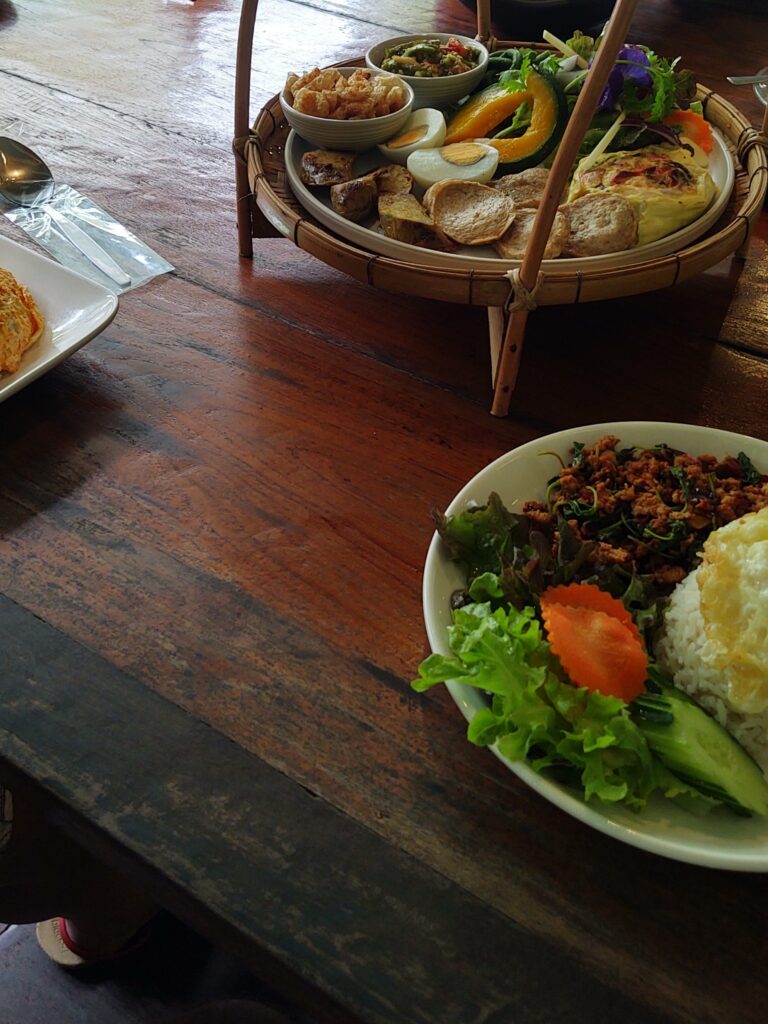
Asian Food From Outside Thailand
Got your fill of Thai food? No sweat — Chiang Mai has immigrants and chefs from all over the world, particularly from Asia.
Chinese
Sadly, our favorite Chinese place closed. But we are trying a new one soon that is supposed to be quite popular, called Jia Tong Heng. I’ve heard good things but not been there quite yet.
I also really like the dim sum at Toey Dim Sum.
Japanese
I eat about as much Japanese food as I do Thai food. There are countless fantastic Japanese restaurants all over town.
- Matsu is my favorite, without a doubt. The prices are reasonable and the value is through the roof, especially on the sashimi plate for under 300 baht. Note that they’re only open for dinner and they’re closed Mondays.
- This place (Krooa Laaew Dtae Ja Sang — meaning, “kitchen, ready-to-order”) on the corner has fantastic Japanese curries for lunch and dinner. Also closed on Mondays.
- Shimbashi and Naruto are both very good as well.
- Sushi Umai, but it’s high prices for high quality. You get much better value at Matsu, in my opinion.
Korean
- Lum Lum is my favorite, with locations at Meechok Plaza (the one on the right) and in Mae Hia (south of the city). They serve both a la carte dishes and Korean barbecue.
- Mashitta, near the bus station, is also pretty good, and they also serve Korean-style hot pot.
- There are several Korean restaurants in Nimman, such as KOBQ and SOISEOUL, but I haven’t been and I’m not sure how good they are.
- I haven’t tried Madang yet, but I’ve seen locations all over town.
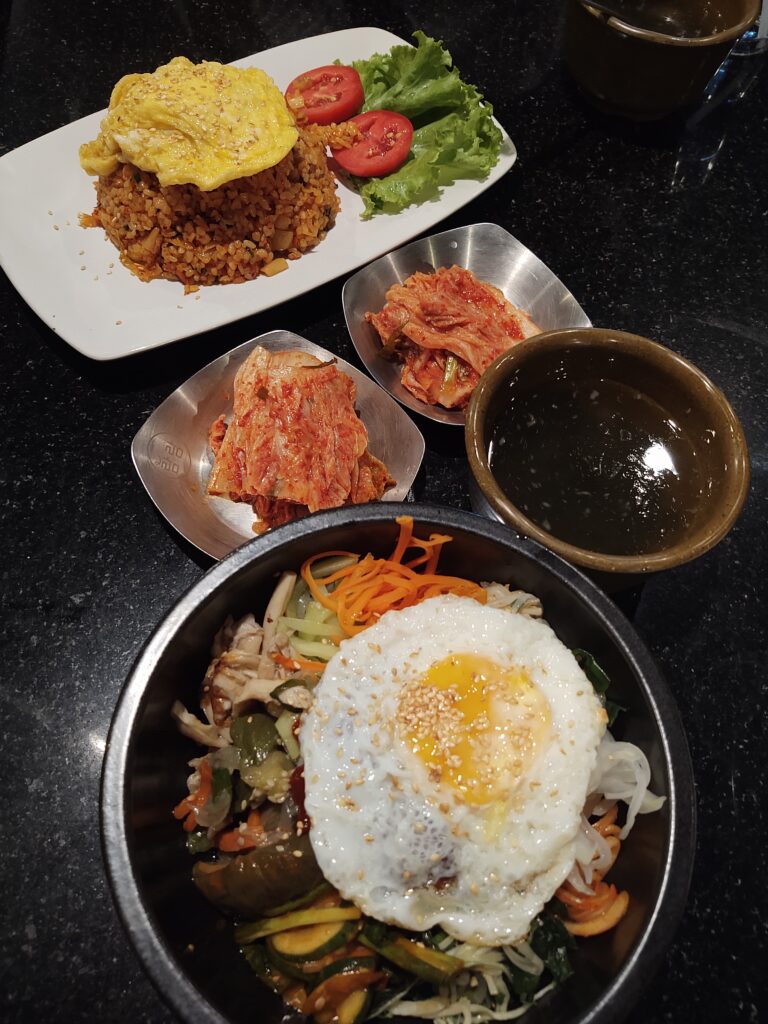
Indian
Accha in Nimman is stellar. The chefs are from India and it’s some of the best Indian food I’ve ever had, with a wide-ranging menu full of excellent offerings. The other places in town simply don’t compare.
Burmese
Chiang Mai is only about 200 miles away from Myanmar (also known as Burma), and there are a huge number of Burmese immigrants in Thailand. Burmese food often feels like a delicious fusion of Indian and Thai food. Don’t miss the tea leaf salad, Myanmar’s most popular dish!
Two Burmese restaurants stand out:
- The Swan Burmese Cuisine, just north of Tha Phae Gate, serves classic Burmese specialties
- Payod Shan Food. The Shan people are an ethnic minority in Myanmar. They’re Buddhist and everything at this restaurant is vegan (including lots of interpretive fake-meat dishes), extremely cheap, and delicious. It’s a bit different from the standard Burmese dishes at The Swan, but they serve a great tea leaf salad.
Indonesian
Sanjan Indonesian Cafe (they moved – here’s the new location!) brought me back to Bali for a moment. Expect tasty soups like soto and bakso, mix plates with lots of tasty veggies, and rendang, meats slow cooked in coconut milk.
Middle Eastern
Gulf Restaurant and Little Istanbul are both good options, serving kebabs, falafel, and more.
Cream loves shakshuka, and we’ve been on a quest to find the best shakshuka in Chiang Mai. It was just okay at Sababa Hummus Chiang Mai, I have high hopes for Hummus Chiang Mai instead.
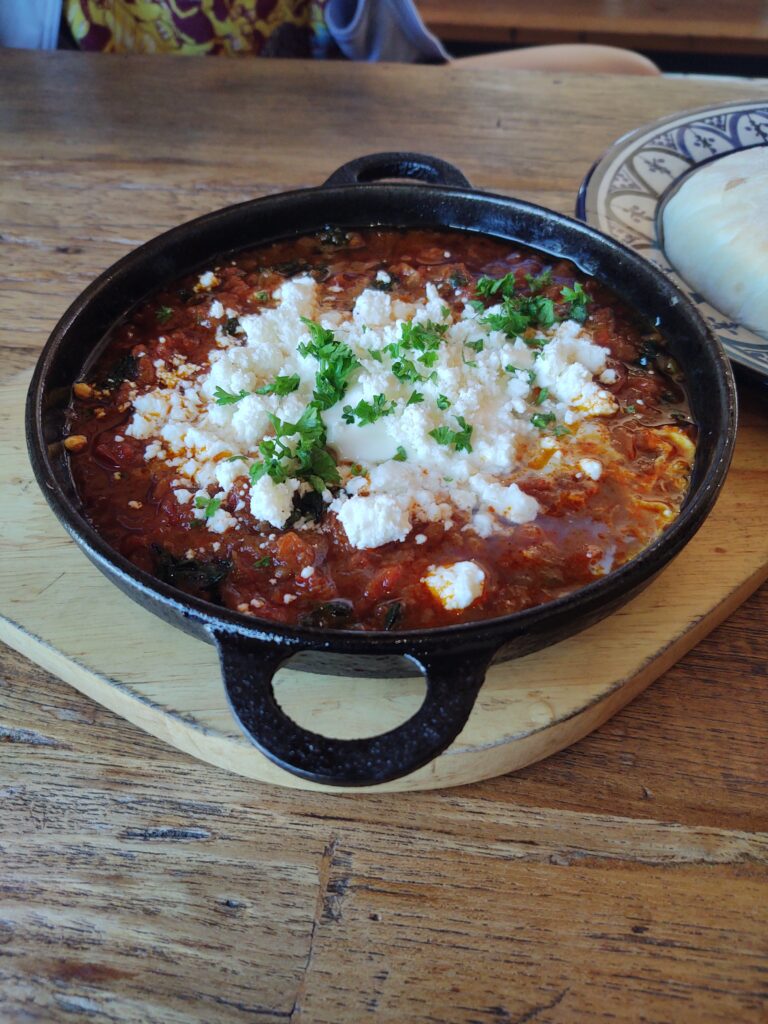
Western Food in Chiang Mai
Especially if you’re staying in Chiang Mai for a month or longer, you’ll probably crave something other than Thai or Asian food sooner or later. Thankfully, there’s lots of fantastic places.
The only drawback to Western food is it’s more expensive than everything else — but with the exception of steaks, it’s still cheap compared to the U.S. and Europe.
American
Their slogan is “Simply the best American food in Chiang Mai” and I simply agree — check out one of The Duke’s four locations to satisfy your craving for burgers, steak, pizza, spaghetti, soup, and more. I also recommend Corner Bistro & Burrito Squad, which also hosts a lot of events and is popular among foreigners and expats.
There are some fantastic burger places too, including Rock Me Burger and Beast Burger. Street food burger stands are cheap and sometimes decent, but just a heads-up, they almost always serve pork burgers rather than beef.
Butter is Better is an American-style diner, with great breakfast and classic dishes like clam chowder and the best pancakes in Chiang Mai too.
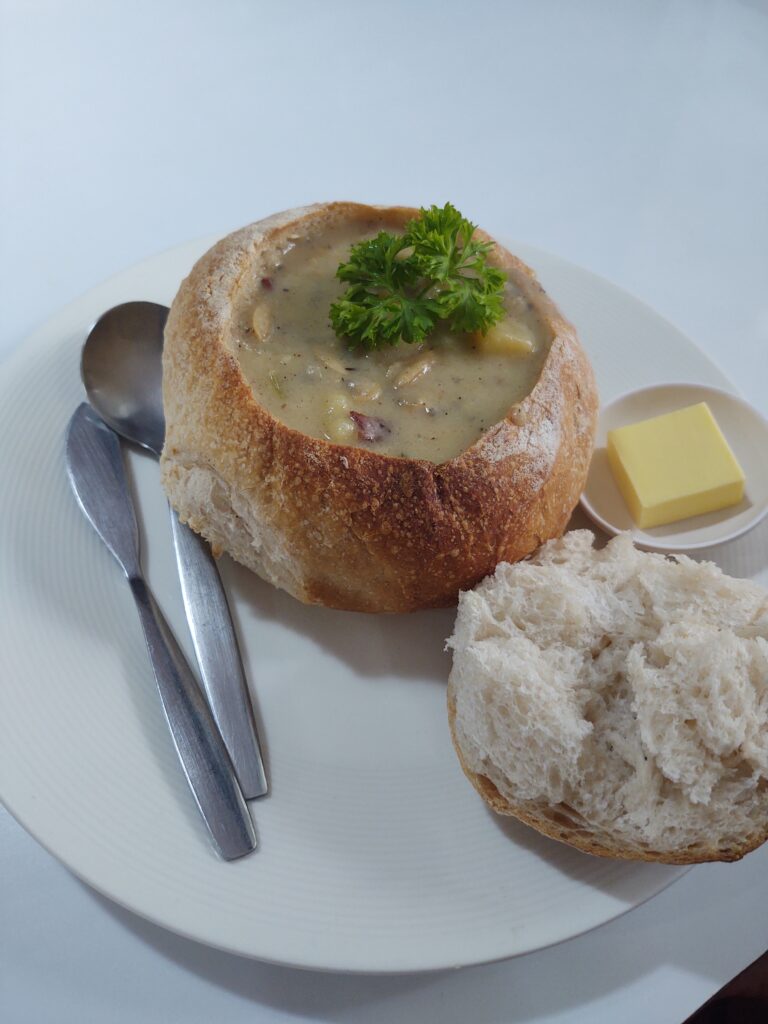
Also, McDonald’s and KFC are everywhere in Thailand. Fried chicken is very popular here, so perhaps this helps explain KFC’s astonishing popularity and abundance.
Italian
Why Not? in Nimman has excellent Italian food and pastas, while Adirak is a fantastic pizzeria.
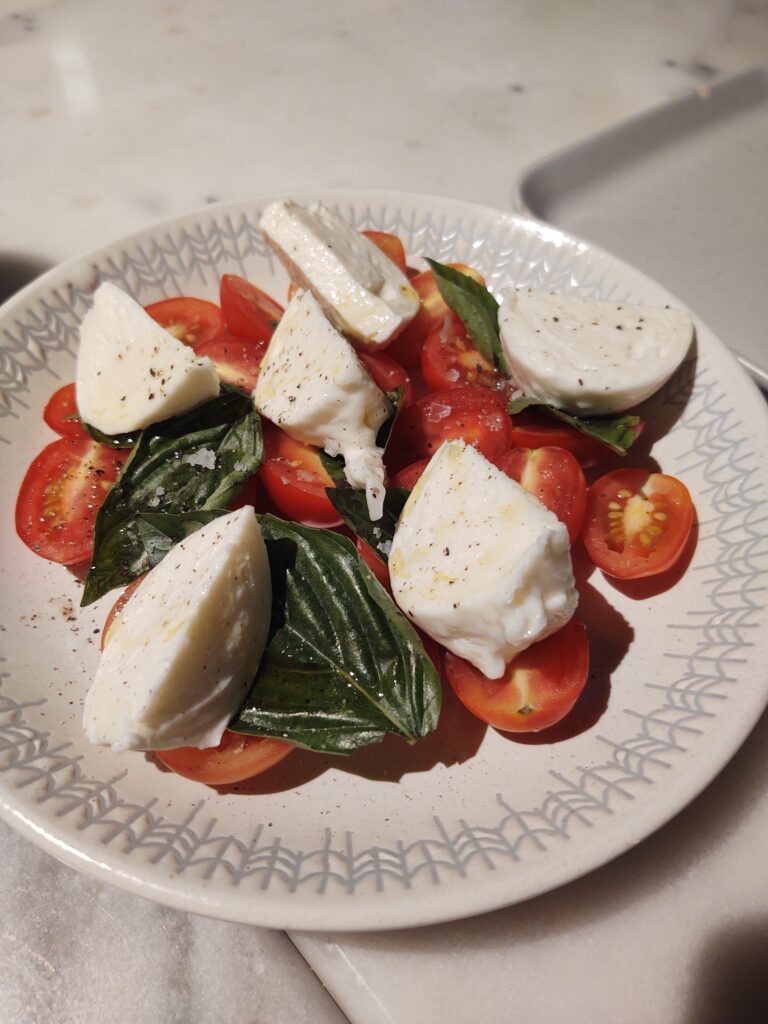
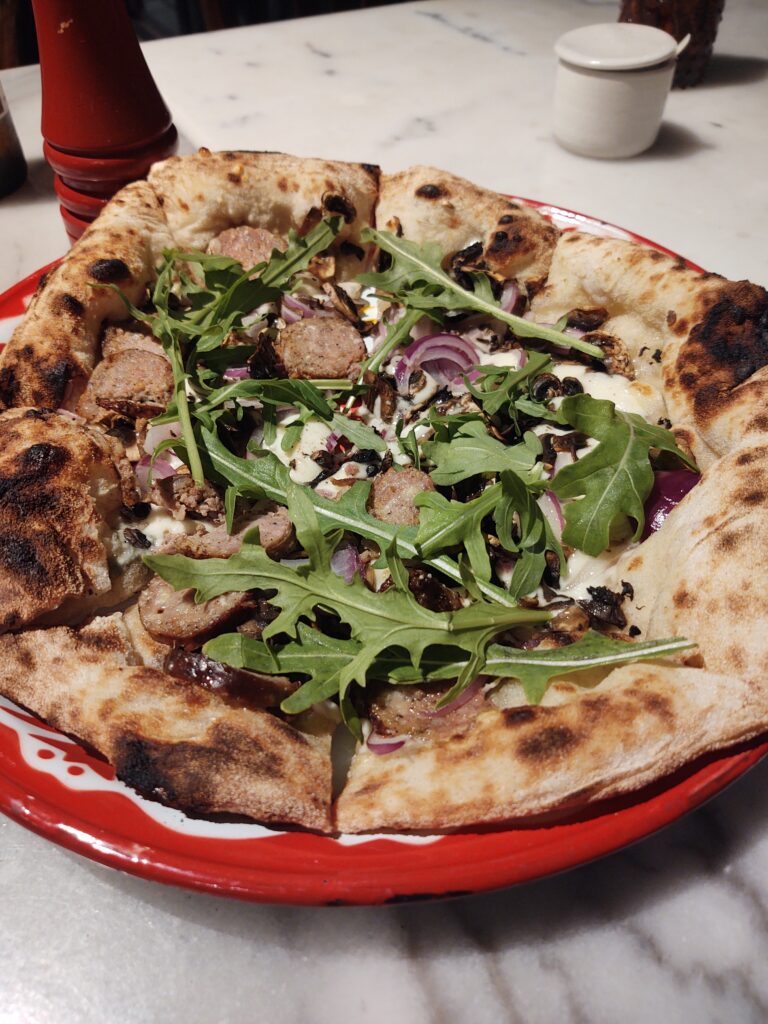
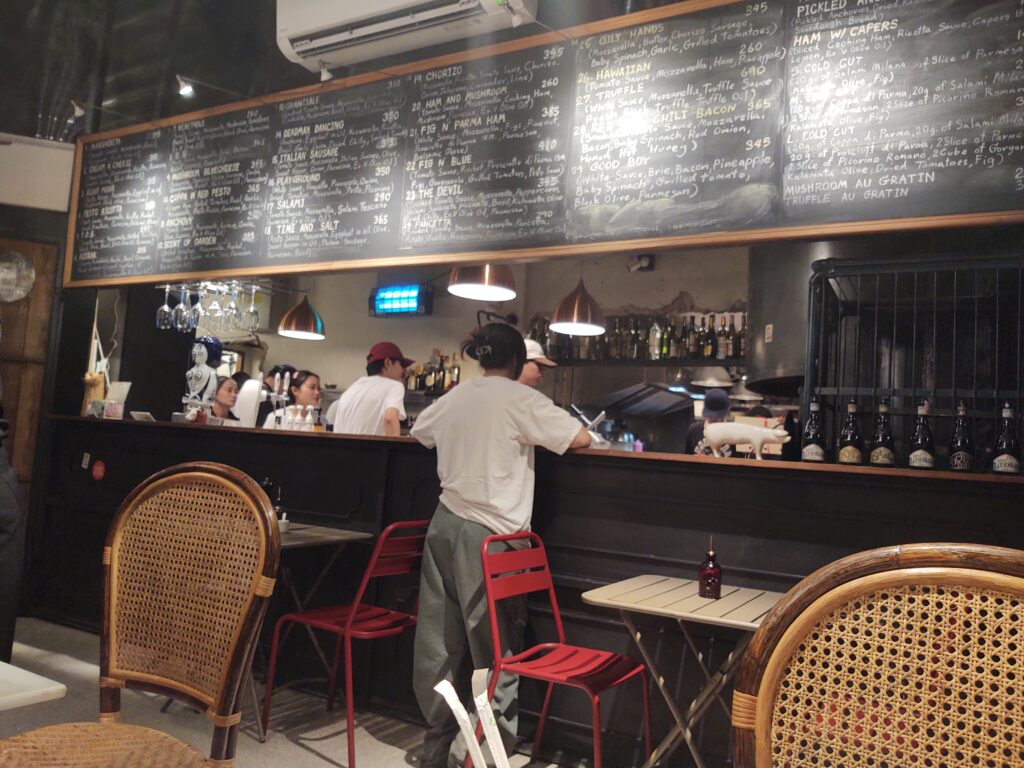
Barefoot Restaurant is also a great choice with local ingredients and very good homemade pastas.
Mexican
Salsa Kitchen is my favorite. Note that the portions are huge, so consider splitting one dish with a friend.
Amigos has very good burritos, and Miguel’s Restaurant is quite tasty too.
Vegetarian & Vegan Food
I’d say that it’s neither easy nor difficult to be a vegetarian in Thailand. I would estimate that only around half of restaurants have at least one vegetarian option on the menu. At many places, you’ll have to order a normal, meat-containing dish and simply tell them to pull the meat pieces out — not ideal, but it works. Tofu, soy proteins and “fake meats” are used in many vegetarian restaurants, thankfully giving you access to tasty, authentic Thai food without harming any animals in the process.
There are many restaurants specializing in vegetarian and vegan food; some because its tasty in its own right, others for cultural reasons.
- Payod Shan Food, mentioned above, is delicious, inexpensive, and 100% vegetarian (you can request any menu item to be made vegan, too).
- Vegan Heaven has a fantastic menu of vegetarian and vegan options, along with tasty smoothies and juices.
- Goodsouls Kitchen has great vegetarian and vegan food, beautiful ambiance, and tasty Western desserts and cakes.
- Imjai Vegan is located in the food court on the bottom floor of Maya shopping mall. They have great variety of delicious vegan food, including meat-free versions of sai ooa and other Thai sausages, and it’s incredibly cheap.
I’d also recommend doing a simple Google Maps search for vegetarian or vegan food, and you’ll find many results around town.
Here’s the two magic words that usually will communicate that you don’t want meat: mangsawirat (vegetarian) and jay (vegan). You can also say “mai ao neuua” or “mai sai neuua” (“Don’t put meat in”). With these phrases, you’ll get vegetarian food most of the time, but definitions vary and miscommunication is still possible. Can’t win them all, I guess.
Dessert in Chiang Mai
If you’ve still got room for dessert, there are plenty of Thai and non-Thai options to savor.
Thai Desserts
The quintessential Thai dessert is mango sticky rice, which is a must-try while you’re in Thailand. The sticky rice is made with coconut milk and sugar, making it extra sweet, and when combined with mango and topped with coconut milk, it’s delicious and refreshing. I’d like to think it’s not horribly unhealthy, but there is probably a lot of added sugar hiding in here.
Thai crepes are small, thin little pancakes, usually topped with honey or chocolate, and occasionally whipped cream, commonly found in street food stands. Pretty good, but not my favorite.
Milk-based desserts, such as tofu milk or coconut ice cream can be served with interesting toppings like rice dumplings and other sweets. Careful: milk has a lot of bacteria to start with and getting this served warm from a street food vendor landed me in the hospital. Still, I’m sure the stuff at dessert bars like Kanommae is safe and clean; just don’t get it on the street.
Roti are technically from India, but they’re very popular in Thailand. Roti are flatbread pancakes that can be topped with banana, egg, cheese, chocolate, sugar, and more. I love ‘em. You can even find excellent non-dessert roti varieties that are topped with savory things like chicken curry. Islam Roti is the best roti I’ve found in Thailand, but it’s not essential for you to go there – this is a hard dish to mess up.
I’m not really sure where this type of dessert toast is from — possibly Taiwan? — but it’s tasty and very popular here. It’s a dessert bread topped with the same sweets as roti — delicious. Go to Mont Nomsod, the best place in town that specializes in these.
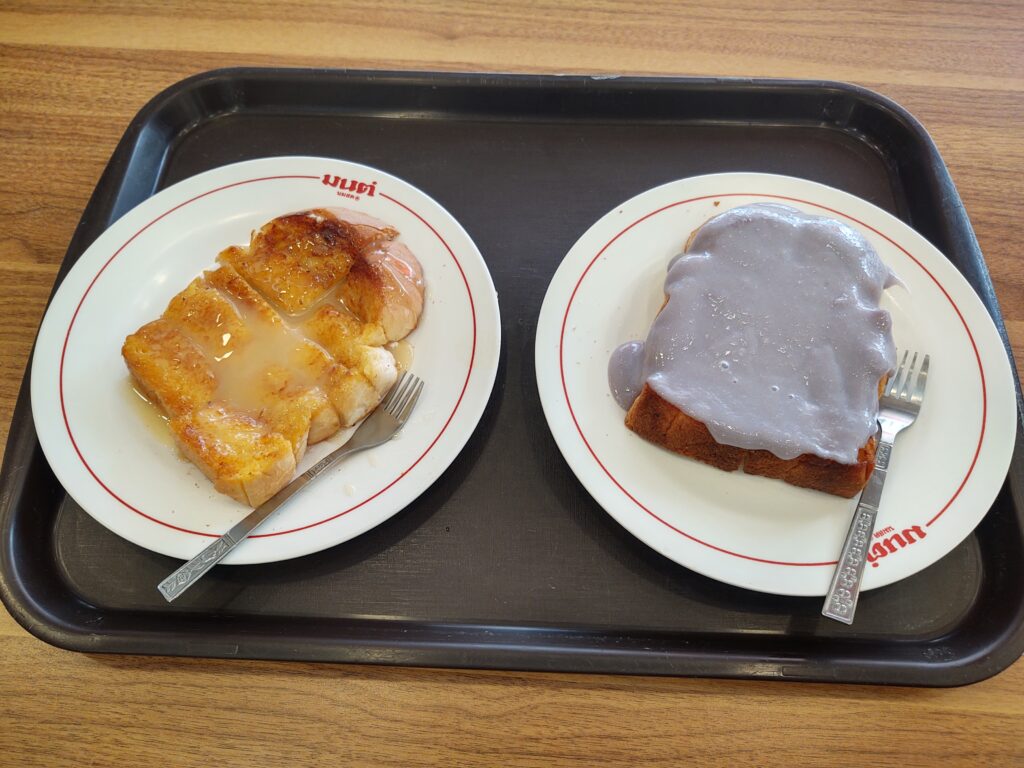
One of my favorite parts about living in Thailand is the abundance of fresh fruit and smoothies. Fruit stands sell all varieties of sliced fruit, while fruit drink stands (different from fruit stands) will make you a refreshing, healthy smoothie with your choice of fruit(s). When ordering a smoothie, specify if you’d like for them to add milk. You can find fruit smoothie stands at any market.
Last, but certainly not least, durian fruit is a regional specialty. It’s stinky and tastes like super-ripe bananas on steroids. Some people hate it, while others — including me — love it. I’d recommend trying it at least once while you’re here. When it’s in season, it’s easy to find — otherwise, you can find durian here or here. It’s a delicacy and is considered “expensive,” but you still can get sizable pieces for the equivalent of $2 or $3 USD or so.
Non-Thai Desserts
I’ll include bubble tea, which is from Taiwan, as a dessert, although it’s good any time of day or night. I especially recommend Shong Cha, a local bubble tea chain, which serves cold tea over hot bubbles, taking this classic to a whole new level.
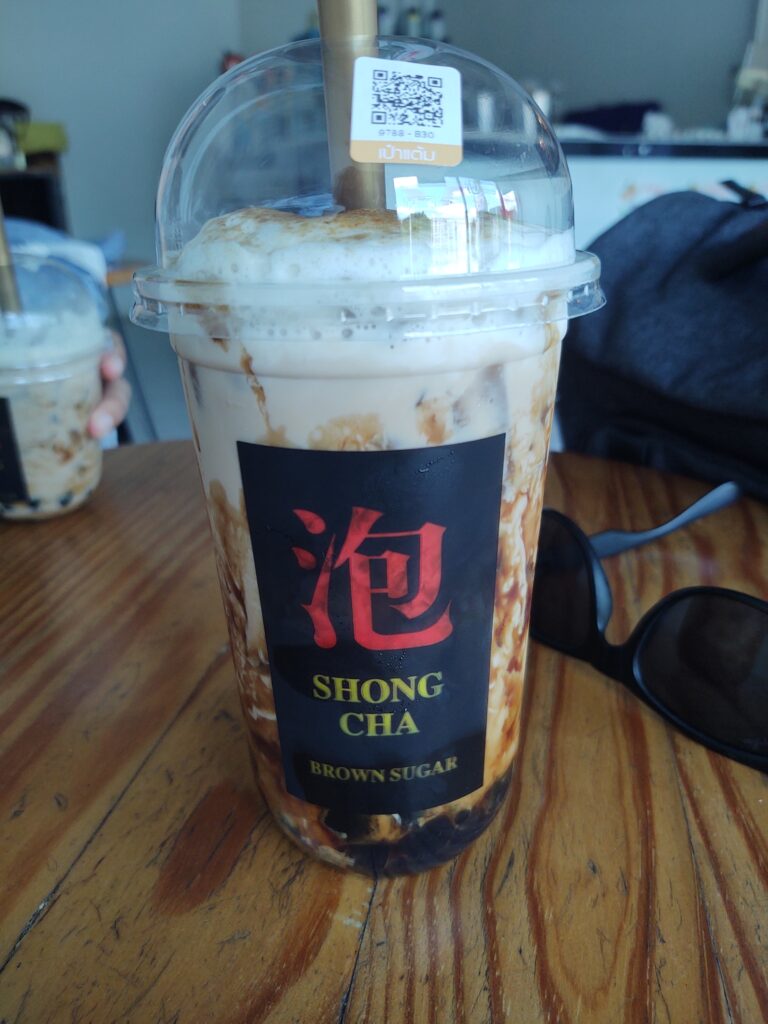
Of course, you can never go wrong with ice cream. The iconic San Francisco ice cream shop, Swensen’s, has branches all over Thailand, especially in shopping malls and large stores. Like McDonald’s and KFC, the American chain is a huge hit with Thai people. There’s also a Cold Stone in Central Festival mall.
Wandering around street markets and bakeries, you’re sure to find baked goods like cake, cookies, and brownies. In my experience, these aren’t usually very good — they’re typically a bit too sweet or too soft; I’m not sure why, perhaps they’re made with the wrong ingredients or technique. Pakamon Factory, though, has got the recipe and method mastered, offering over 100 varieties of superb cakes, cookies, and baked goods. Dang Bakery is also really good.
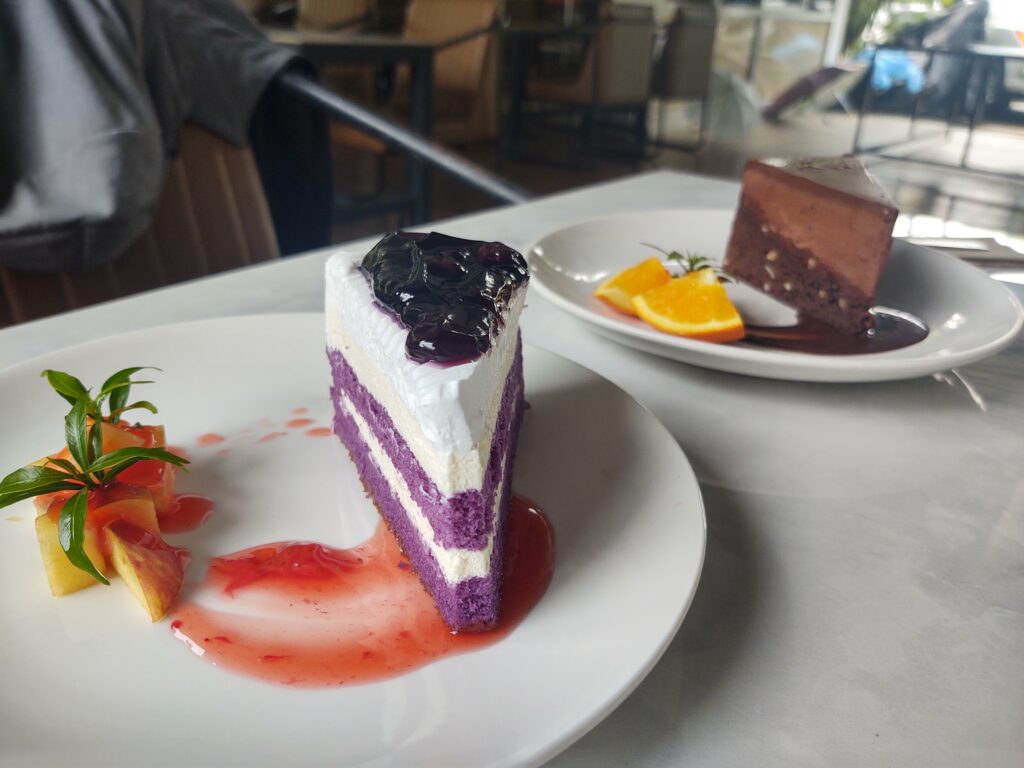
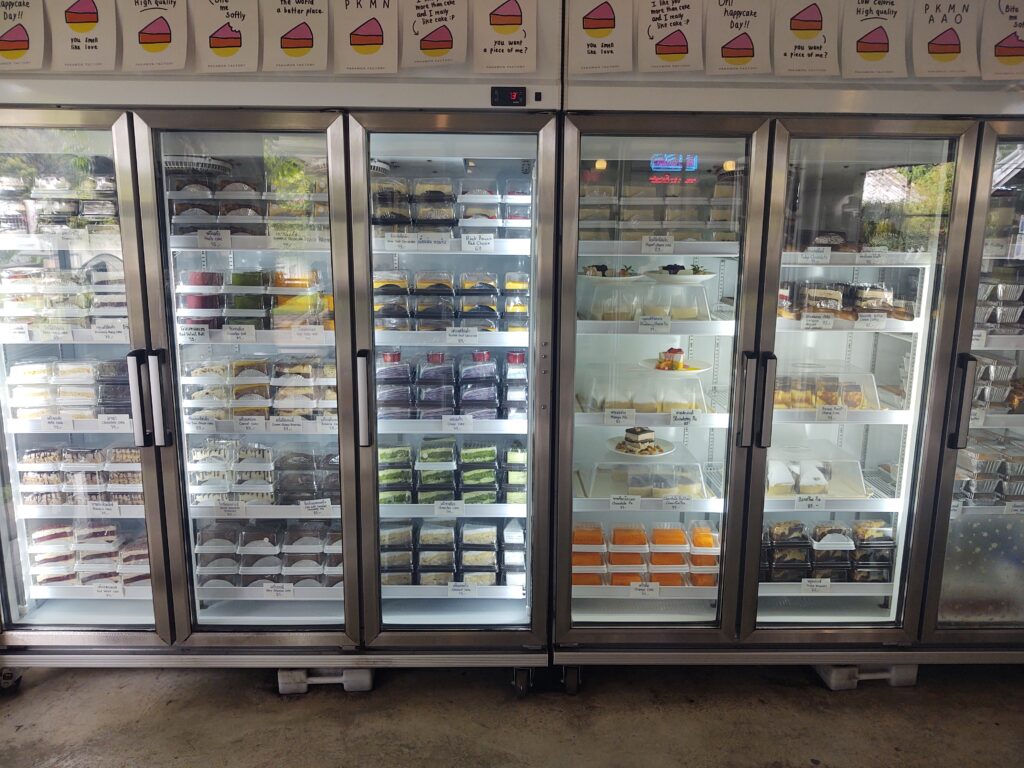
For a solid offering of inexpensive desserts, food, coffee, and more, plus a casual coworking space, I also recommend Bannom.
Breakfast
Thai cuisine doesn’t really have special breakfast foods. I guess the closest ones would be khao tom and jok, which are both essentially rice porridge. Jok Sompet is some of the best and worth trying out for breakfast sometime.
More commonly, I like to eat moo ping, sai ooa, or fried chicken with sticky rice in the morning. It’s a nice, flavorful one-two punch for breakfast that will satisfy you for hours. It’s easy to find these freshly grilled at street food stands, especially in the morning.
Western Breakfast
Thailand is the world’s eighth most-visited country (at least, it was in 2019), with the majority of tourists coming from places like the U.S., the U.K. and Europe, and Australia. These are all places that eat a breakfast including things like bacon, eggs, toast, (possibly) tomatoes, and sausage, so thanks to the huge tourism industry, you can easily find “Western Breakfast” in Thailand if you’d like it.
Here are some good Western Breakfast spots:
- Butter is Better, undoubtedly the best pancakes in Thailand
- Sun Rays
- Good Morning Chiang Mai
- Chiang Mai Breakfast World
Coffee & Tea
It would be unfair to leave coffee out of a discussion of Chiang Mai’s food scene simply because it’s everywhere. Some Thai people call Chiang Mai “Cafe City” because of its thousands of cafes, with one on every corner.
In most cafes, you’ll find espresso drinks of varying quality. On average, any random cafe you walk into will probably be decent but maybe not great. I’ve found that the city’s most famous cafes, such as Ristr8to, the nearby Roast8ry Lab, and locally-sourced Akha Ama, are all worth the hype, serving excellent coffee, and with specialty drinks available too.
If you want to buy your own coffee beans and make your own drip coffee (which can be hard to find here), I recommend visiting Hillkoff, a one-stop shop for all things coffee. They sell beans from all over the world and have a great selection of tasty Thai roasts (Blaze is my favorite). While some coffee stores here sell highly acidic coffee that tastes weak and tea-like, Hillkoff’s coffee tastes like the real deal. Sample before you buy at the cafe on site.
Last, but certainly not least, you can find Thai tea pretty much everywhere, and quite cheap too. The Thai tea served at restaurants in the West is a specific kind of Thai tea with milk and sugar, called “cha nom yen” (tea, milk, cold), if that’s what you’re looking for. You can also get it without the milk or sugar, if you prefer.
Food In Chiang Mai, Thailand
For almost all cravings, they probably have it in Chiang Mai, with good quality and prices. The large international community and artsy culture in Chiang Mai combine to form one of the best food communities in the world, with almost any cuisine you want at your fingertips.
Chiang Mai has thousands of restaurants, and this guide only scratches the surface. Still, I hope this has helped you realize what options are available. I’m guessing you’re hungry by now, so I’ll leave you to it.
Bon apetit,
Andrew
P.S. What’s your favorite Thai food dish? Leave a comment below!
P.P.S. Subscribe to the email list with the form at the bottom of the page to get notified about part two of this guide — how to spend your time in Chiang Mai — and future posts about travel and life around the world.
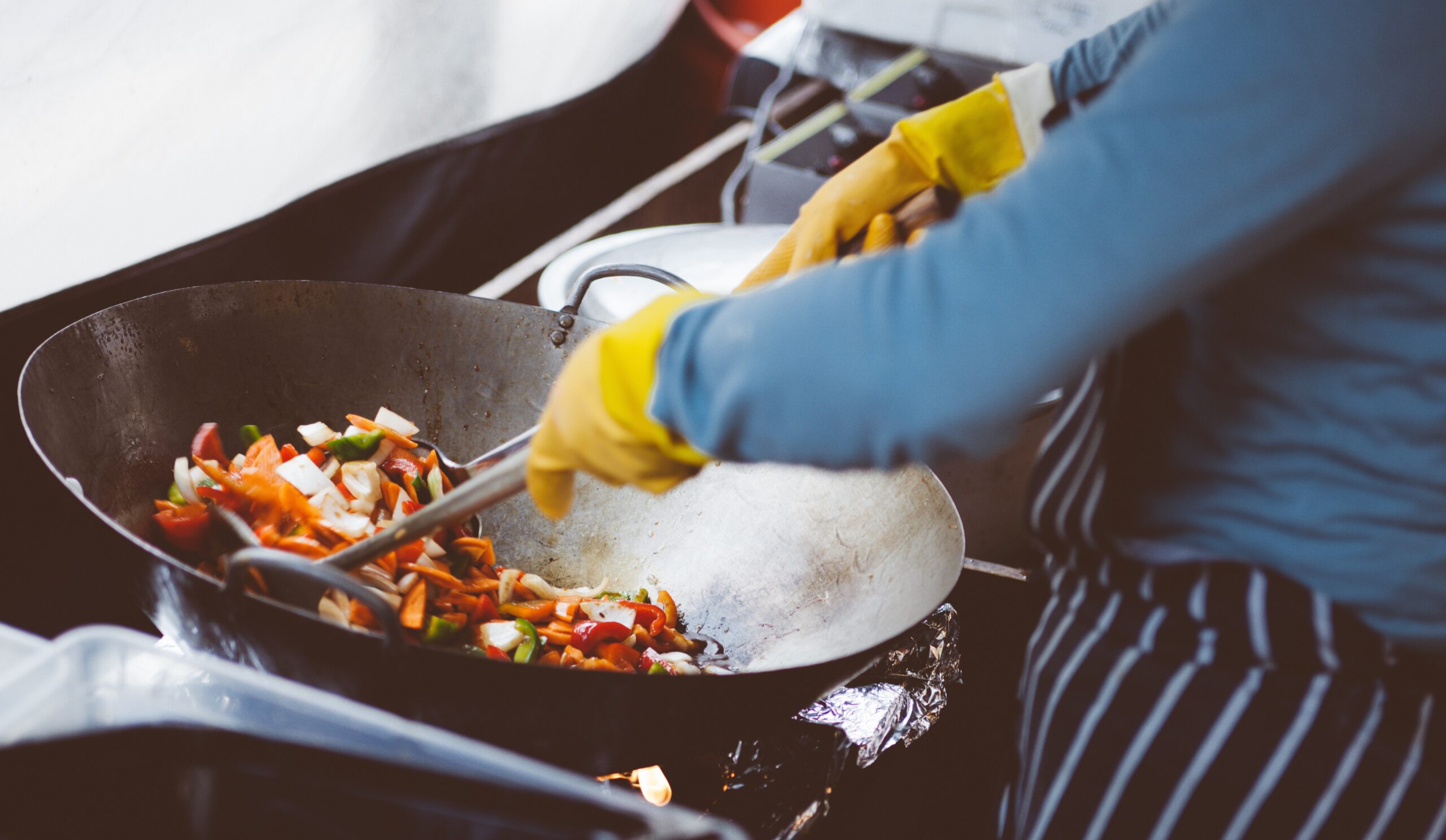
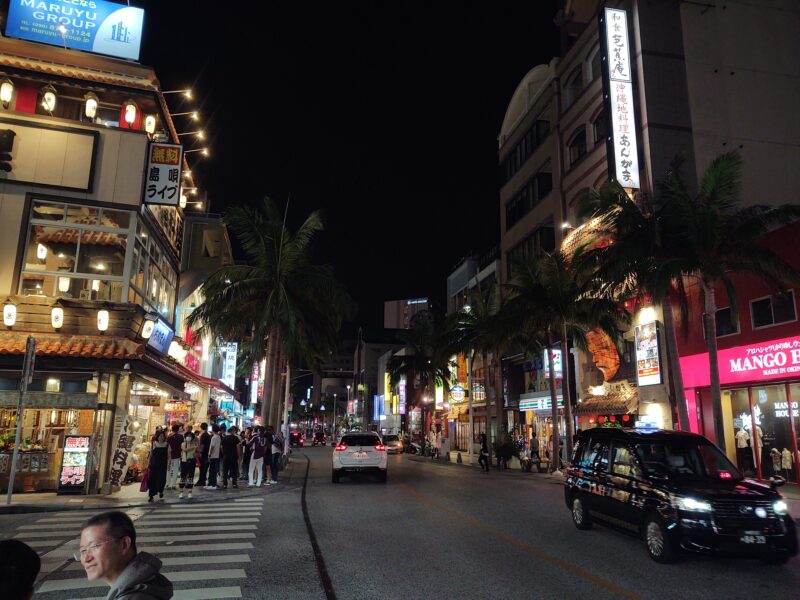
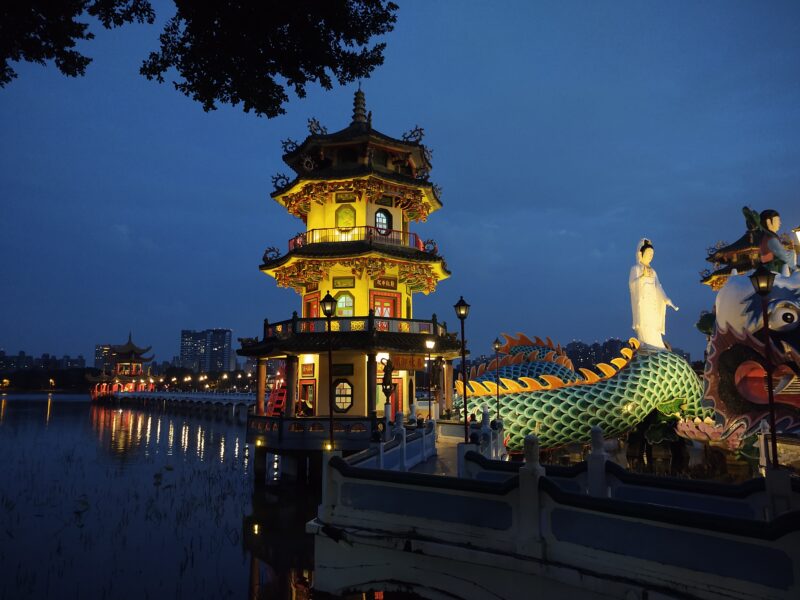
2 thoughts on “What To Eat In Chiang Mai, Thailand (September 2023)”